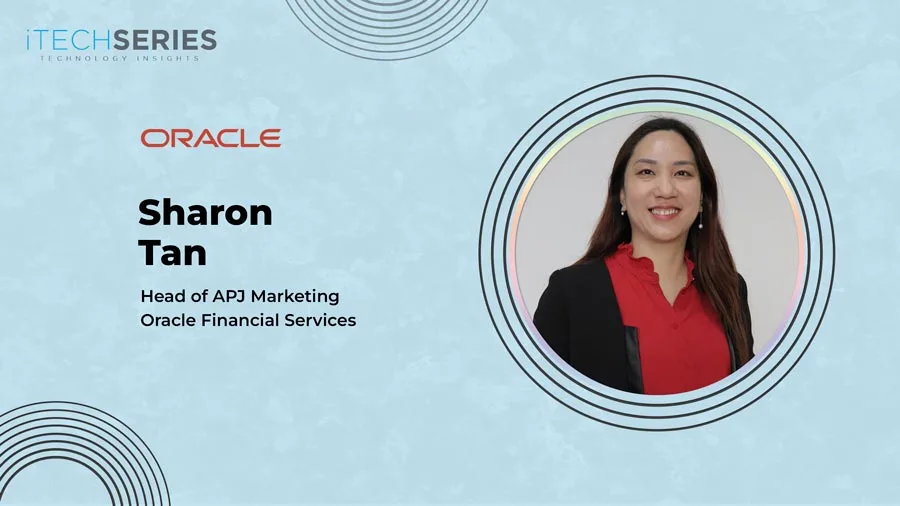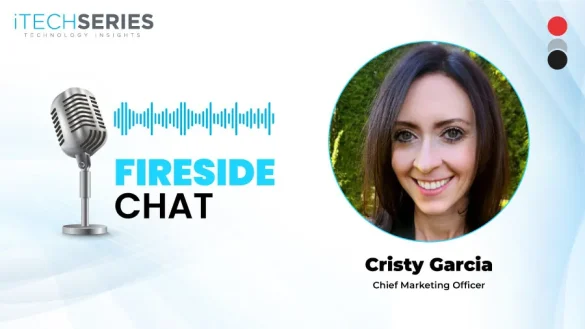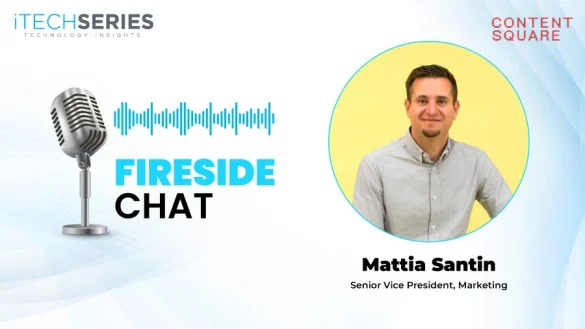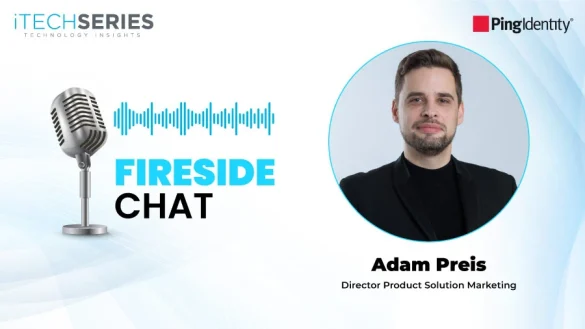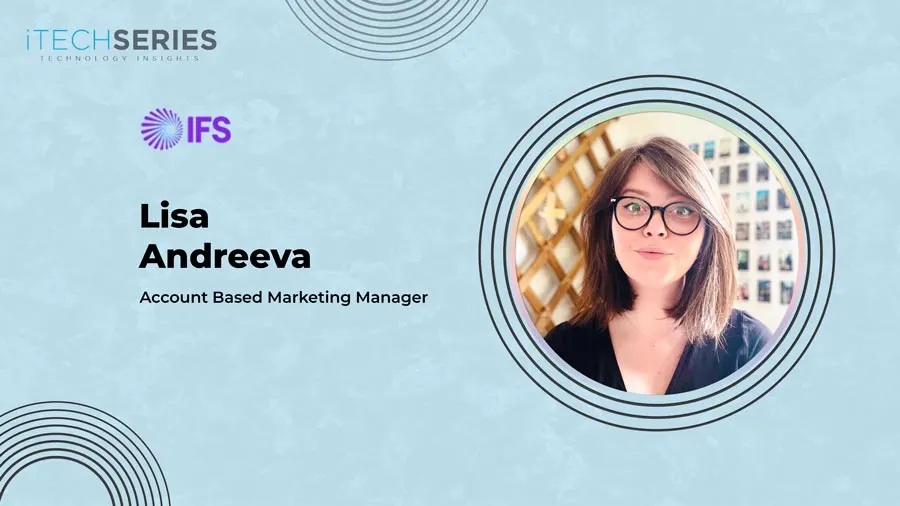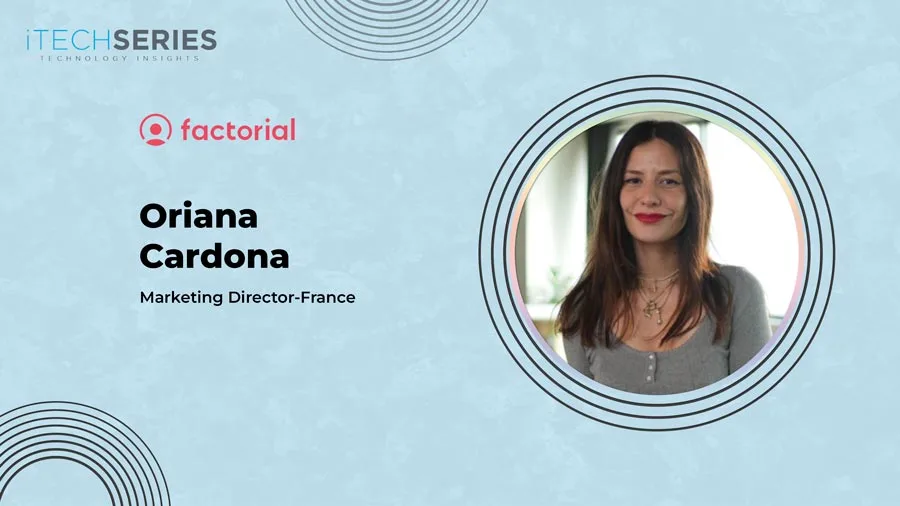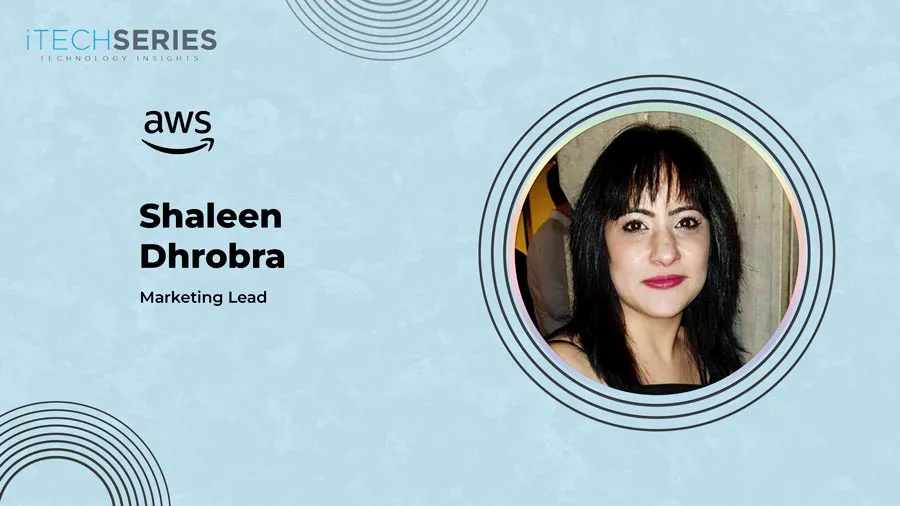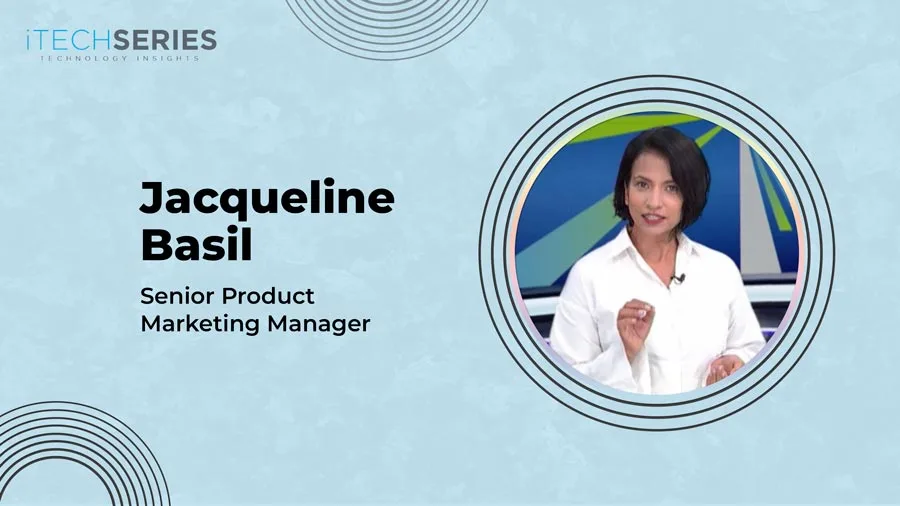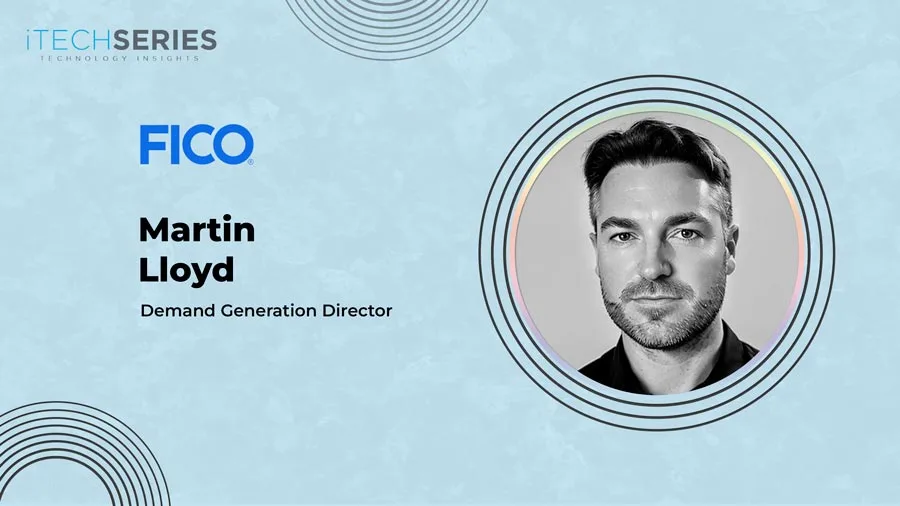Sharon Tan, Head of APAC Field Marketing at Oracle Financial Services, brings over 17 years of B2B marketing expertise across cloud, SaaS, and FinTech. Discover her insights on the evolving role of marketing in GTM, integrating impactful campaigns, blending brand with demand, navigating the complexities of APAC’s FinTech landscape, and implementing data-driven strategies.
Sharon, Welcome to the interview series. Could you tell us about yourself and your marketing journey?
B2B marketing has been my passion for the last 17 years, and I’ve developed domain expertise in industry marketing working at cloud hyperscalers, SaaS, and technology companies. In the last 11 years at Oracle and NICE Actimize, I sharpened my domain expertise in financial services marketing, covering topics like AI, cybersecurity, payments, financial crime and compliance, data monetization, and analytics.
In my career, I’ve also taken on global digital and regional field marketing roles in Asia Pacific and Middle East Africa, mentoring and leading multicultural teams spanning Singapore, India, and the U.S.
In my current role as head of APAC field marketing at Oracle Financial Services, I oversee the region’s GTM marketing strategy, analyzing market potential, competitors, partners, personas, and segment needs to define and execute marketing programs based on business priorities.
My strategic approach to marketing campaigns has been recognized regionally with several awards, including the Market Development of the Year Award from Oracle and the Gold Winner for Integrated Marketing Campaign (B2B) from Marketing Magazine.
How has the role of marketing evolved in its alignment with the broader go-to-market (GTM) strategy?
In today’s digital landscape, a go-to-market (GTM) strategy ensures that a brand remains relevant to customers, cutting through the overwhelming noise, clutter, and fleeting trends.
By firmly grounding itself in marketing fundamentals—specifically, addressing customer pain points—brands can establish authenticity and deliver genuine value. Prioritizing relevance and crafting a rich, engaging customer experience is not just important; it’s essential for success.
Marketing has evolved to become highly intent-driven and data-driven, empowering brands to effectively identify and act on customer pain points, buying behaviors, and intent signals.
A powerful approach involves developing insight-driven campaigns that seamlessly integrate a digital sales layer with traditional sales strategies. Utilizing AI as an enabler, analyzing buying intent signals, and making precise adjustments to ensure consistency between online and offline experiences are non-negotiable strategies for marketing.
These tactics propel potential buyers forward in the buying cycle, significantly accelerating the sales process by clearly demonstrating value. This proactive marketing approach secures a pivotal role in management decisions, influencing the GTM strategy and showcasing its undeniable impact on overall business revenue outcomes.
What are some effective ways for marketers to create a cohesive strategy that blends brand building and lead generation?
B2B marketing focuses on building and nurturing relationships through authentic narratives that are credible, relevant, and experiential.
To align awareness and demand generation goals, it’s crucial to create value, which involves increasing ‘time-share’ and ‘mind-share.’ Enhancing customer satisfaction with your products leads to greater ‘wallet share’ and demand.
Time-Share + Mind-Share = Wallet-Share
I recommend using awareness and demand generation metrics to shape our annual strategy and assess value creation. By setting benchmarks for executive engagement, website performance, customer success, and public relations, we can identify effective campaigns and make necessary adjustments.
Additionally, with demand generation KPIs like attributed pipeline and opportunities, we ensure that field marketing and sales teams stay aligned and accountable for ROI on marketing investments.
What are some of the key go-to-market challenges and opportunities in the broader FinTech space?
A significant challenge that arises is the reliance of the region on large and diverse buying committees. In the Asian context, this adds a layer of complexity, particularly within the financial services sector, as buyers are culturally inclined to seek consensus from all involved parties.
The Forrester’s Buyers’ Journey Survey, 2024, shows that in APAC, on average, 24 individuals from within and outside organizations play pivotal roles in the purchasing decision process. This number is the highest compared to North America and Europe.
The survey also shows that power has shifted to a younger generation of buyers-71% of APAC’s purchase influencers are under 44 years old and seek out information about a vendor mainly via interaction with subject matter experts and information from Gen AI tools.
Here, brands can take the opportunity to showcase thought leadership via industry experts, allowing for co-creation opportunities and providing buyers with validation from trusted external voices.
Marketing and the wider product, analyst relations, consulting, and sales teams need to work cohesively to facilitate connections between buyers, their external influencers, partners, and customer advocates.
Besides large buyer committees, the financial services industry is also one of the most dynamic, carrying its own unique nuances and industry jargon. This requires intelligent, sophisticated engagement. With 70-80% of the buying cycle happening online without engagements with the vendor, marketing in the FinTech space requires intelligent, purposeful digital engagements in two areas.
Companies should first revaluate their digital and content strategies to optimize for AI search. It’s essential to consider how AI tools identify user intent. Marketing has a significant opportunity to shape a brand’s narrative in the AI landscape by creating high-quality, clear, structured, and differentiated content.
Additionally, companies need to remain vigilant even in the early stages of the buyer cycle by monitoring buying intent signals. This proactive approach is crucial for capturing mindshare and building trust during the discovery, evaluation, and consideration stages of the buyer journey.
“Marketing has evolved to become highly intent-driven and data-driven, empowering brands to effectively identify and act on customer pain points, buying behaviors, and intent signals.”
How do you maintain cross-regional marketing alignment while adapting to local market needs?
The starting point for alignment is a market insight that is driven by a customer pain point. By focusing the marketing campaign on delivering value, it allows for a more sustainable value proposition to tie into the broader marketing message and objective.
Different markets will have varying levels of market maturity, and marketers need to ask themselves what channels are most effective in customer outreach.
One example of a campaign that was conducted was to look at varying levels of digital maturity of a bank, which varies by country, market, and geography. By looking at 5 key metrics to help banks measure their ‘digital maturity’ (e.g., digital engagement and reach, the pace of adoption, depth of data and customer insight, digital workforce, and cross-industry readiness), we were able to map relevant account-based marketing (ABM) programs and customer workshops, broader country- or regional-wide events, and digital campaigns to suit the local market needs.
Which has been you’re most challenging yet successful marketing campaign experience?
The ‘Digital Bank of the Future’ campaign was designed to position Oracle as a prominent provider in the digital banking sector. Although Oracle had long been recognized for its strengths in databases, ERP, and core banking, this campaign significantly enhanced brand awareness and recall, highlighting its capability to deliver innovative digital banking and payment solutions.
The campaign involved the launch of a global digital demand research survey report with key insights into the top financial markets globally. The research captured the trends and customer voice in the retail banking arena. In particular, it identified what millennials were looking for from their banking provider, how open they were to neobanks and new FinTech players, and the need for trust.
These insights were then incorporated into our marketing messaging and shared with the external influencer and FinTech community. Digital banking bootcamps were held, engaging 300 senior banking executives, to perpetuate a change of mindset from buyers. This approach helped banks to adopt an open API-first strategy and collaborate across the industry’s entire FinTech ecosystem to deliver full-service banking to customers.
We also arranged FinTech hackathons to apply open banking API use cases. The campaign overall resulted in a $26 million pipeline and a reach of 160,000 contacts via both influencer, digital boot camps, hackathons and digital programs.
This campaign’s received industry recognition as the gold award winner for Integrated Marketing Campaign (B2B) at the Marketing Excellence Awards program by Marketing Magazine.
As a marketing leader, how do you leverage the power of AI for your marketing campaigns without being overly reliant on it?
The best approach to AI is to integrate public data with your unique first-party data. This combination enables you to uncover valuable insights, create tailored offerings, and refine processes that provide a competitive edge. There is a demand for contextual AI, which merges insights from three key areas: customer data, the context, and meaningful connections through MarTech.
AI needs to be an enabler and optimizer so that marketing can do more with less time and effort. Agentic AI can move the needle to help business functions such as marketing, business development, or customer service be more efficient. However, for brands to take full advantage of AI, there needs to be a proper data strategy; as such, the human element cannot be replaced by AI or the machine. The ability to harness data well so that quality data feeds into your AI models is critical to improving productivity.
Marketers today need to know how to interpret data and make data-driven decisions by recognizing opportunities and challenges in the market, and this prevents us from being too overly reliant on AI.
Yet with all the advantages of AI, it isn’t a magic fix but a tool that, if used well, can help you amplify a strong retention strategy. As an example, AI can help with your content and retention strategy by helping to maximize your content efforts, expanding a single content piece both globally and locally and across digital channels to various market contexts and languages.
What’s your advice to up-and-coming marketers on cultivating the right leadership style?
My advice is to adopt a leadership style that adapts to the make-up, strengths, and weaknesses of your team while encouraging collaboration and creativity.
When leading a team with limited experience, it is essential to be hands-on and actively support skill development. One example is how I successfully guided a team through a restructuring to transition to a fully digital approach. I had to build a digital marketing function from the ground up. I then mapped out the digital marketing roadmap and provided coaching, working closely with each individual to help them reskill, providing regular 1-on-1 feedback, which saw them fully trained in a short amount of time.
Teams that comprise more senior and more experienced staff need both inspiration and motivation to achieve their full potential. Leaders need to provide a clear vision of the end goal and outcome, have the courage to step back, and provide space to foster a culture of innovation and improvement.
I strongly recommend that leaders enhance decision-making by empowering diverse perspectives. Adopting a servant leadership approach will facilitate the empowerment and delegation of varying levels of authority to competent team members. This helps to build trust and loyalty for experienced team members and fosters a sense of ownership and commitment. Overall, this helps identify their strengths and position them for success, specifically in roles and scopes of work that play to those strengths.
As marketing leaders, we need to have a strong ability to communicate the marketing value-add to the business in order to get buy-in from key stakeholders. Keeping an open and transparent dialogue and showcasing marketing’s achievements and shortcomings via a progress scorecard ensures alignment with stakeholders on expected deliverables.
About Sharon Tan
Sharon is a seasoned B2B marketing leader with 17 years of experience across financial services, banking, FinTech, and technology sectors. Currently serving as Head of APAC Field Marketing at Oracle Financial Services, she drives GTM strategies, demand generation, and integrated campaigns. Sharon has led multicultural teams across Singapore, India, and the U.S., and is passionate about mentoring the next generation of marketing professionals. Her strategic campaigns have earned regional accolades, including Oracle’s Market Development Award and a Gold Winner for Integrated Marketing Campaign (B2B).

